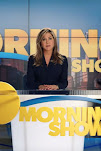THEORY 1: MEDIA LANGUAGE
MEDIA LANGUAGE is the way in which the meaning (conventions) of a media text is conveyed to the audience through media codes (signs and symbols) suggested by the way a scene is set up and filmed
CODES are a system of signs and symbols which are used to communicate meaning
CONVENTIONS are the commonly accepted meaning created by the codes
Example:
- Red traffic light tells you to stop
Code (sign and/or symbol): Red traffic light
Convention (meaning): Stop
MEDIA STUDIES is the study of the relationship between media producers and audiences
MEDIA PRODUCTS are made up of images, words, and sounds
Media producers use media language to create media products, and audiences use their understanding of media language to interpret and understand the messages being communicated
The media generates a message for us, therefore, media producers encode their text with meaning, along with the audience decoding the text to understand the meaning
Example:
- Stop. Open. Buy this. Do this. Think this (the media's message)
- Lighting to convey emotion, as well as, font, or clothes/costume for themes (producers' encoded message)
- Age, culture, income, or sexuality can change the way a message is decoded (audiences' decoded message)
Media products are put together depending on the platform used to distribute the product. Different forms use media language differently and we must be aware of the way platform and the form set up a template for production
Media Platform | Media language used | Examples of form | Specific media products |
Print Media | Uses text and images only | Newspapers | The Daily Mail |
Broadcast (audio) | Audio products use music, sound effects and the spoken word to communicate to audiences. | Music radio | Radio Folklore 90 |
Broadcast (video) | Video products use images as well as sound. Video can use the spoken word as well as word on screen as required | News reports | euronews. |




No comments:
Post a Comment